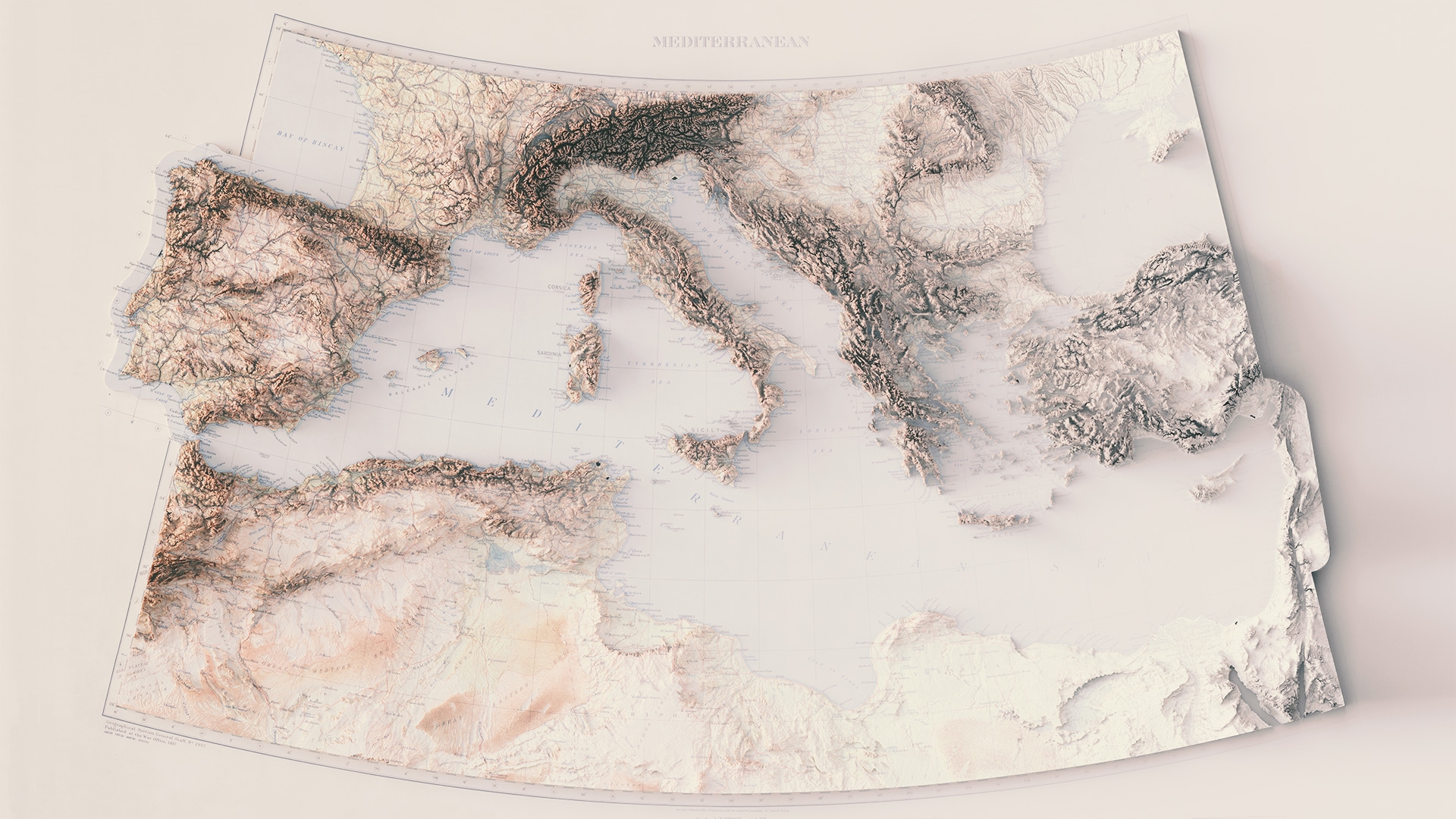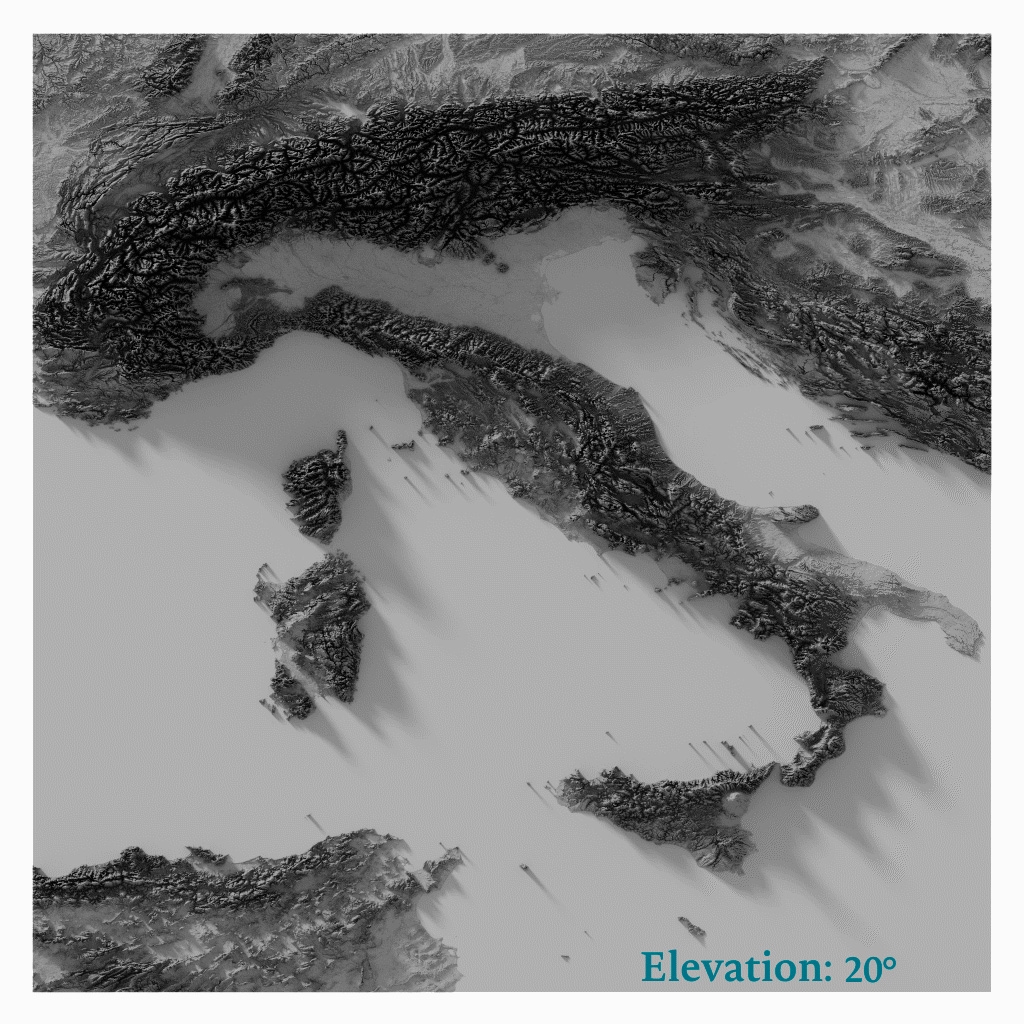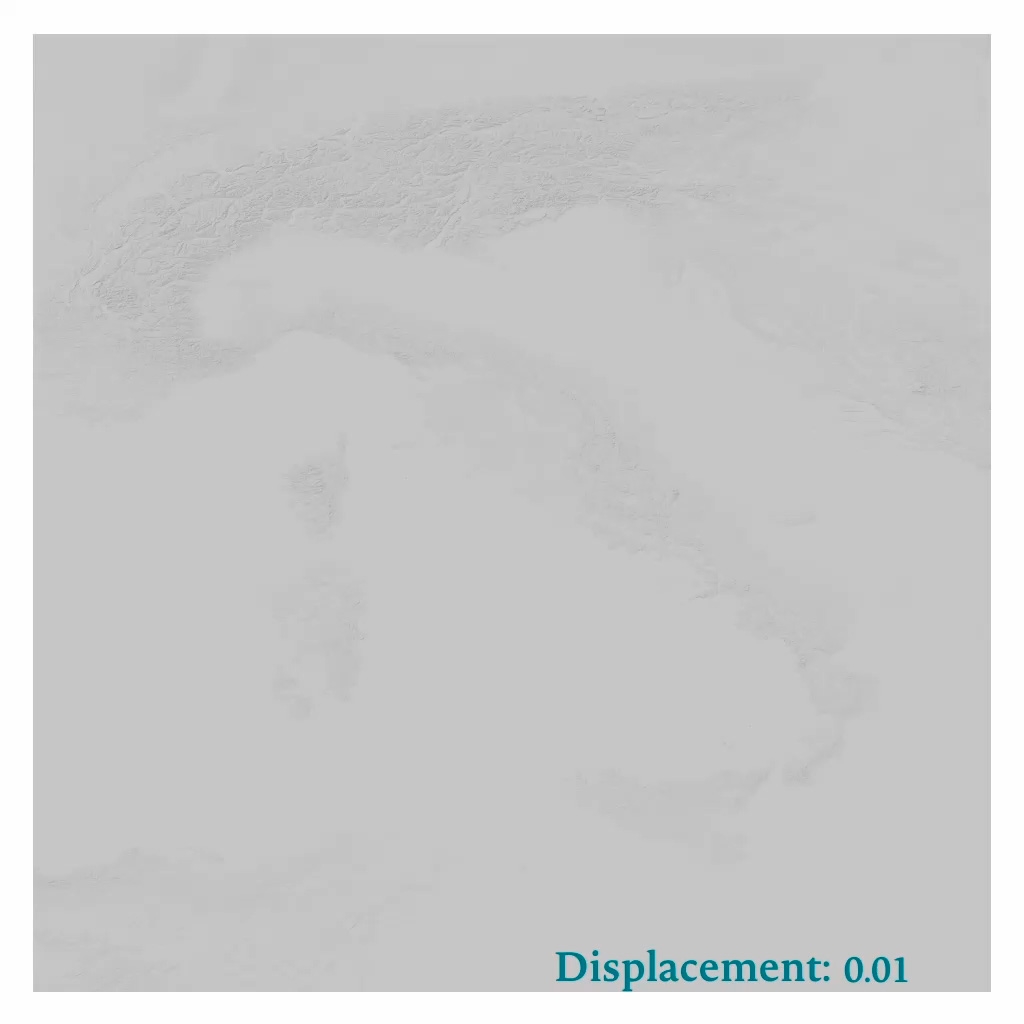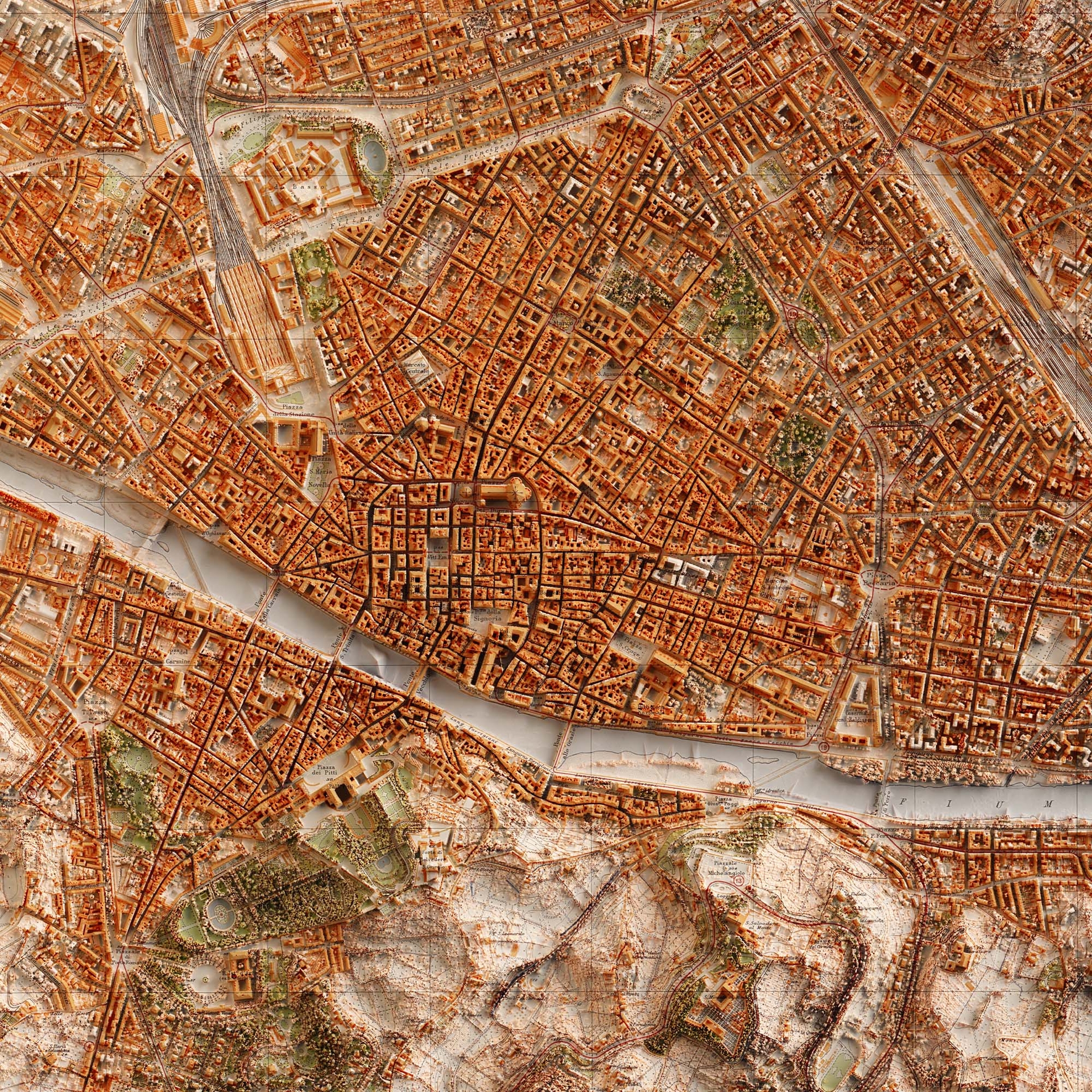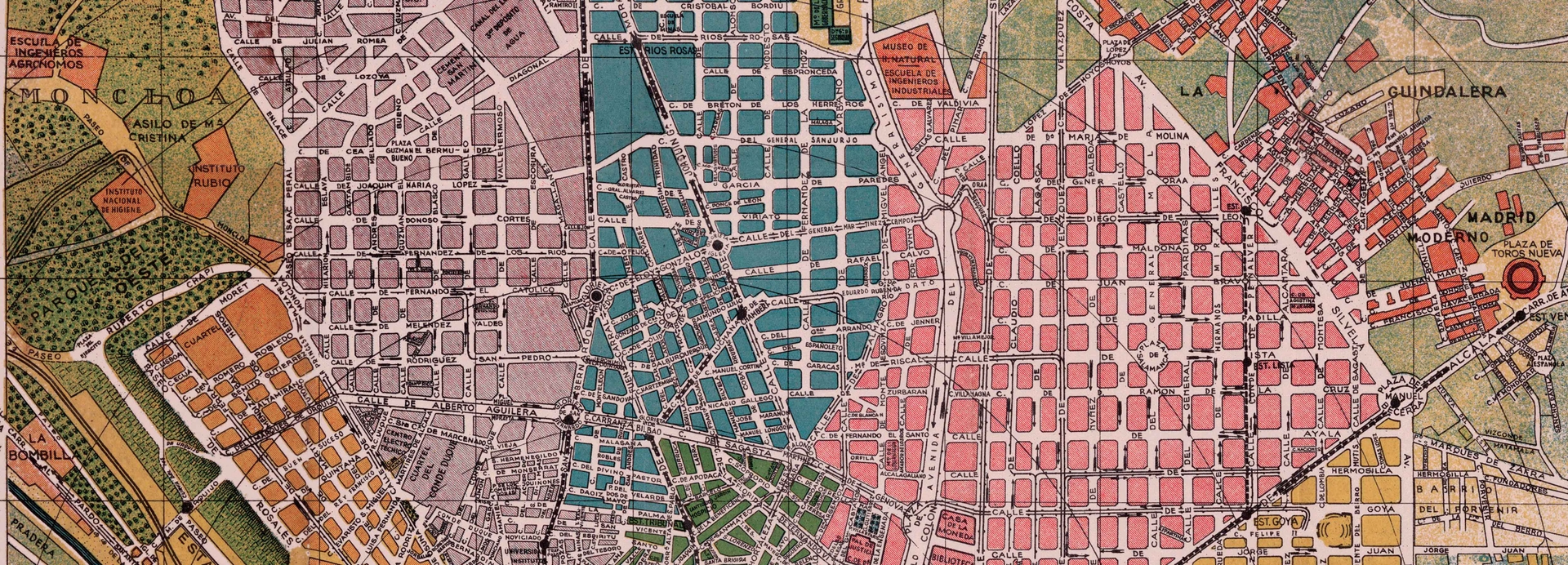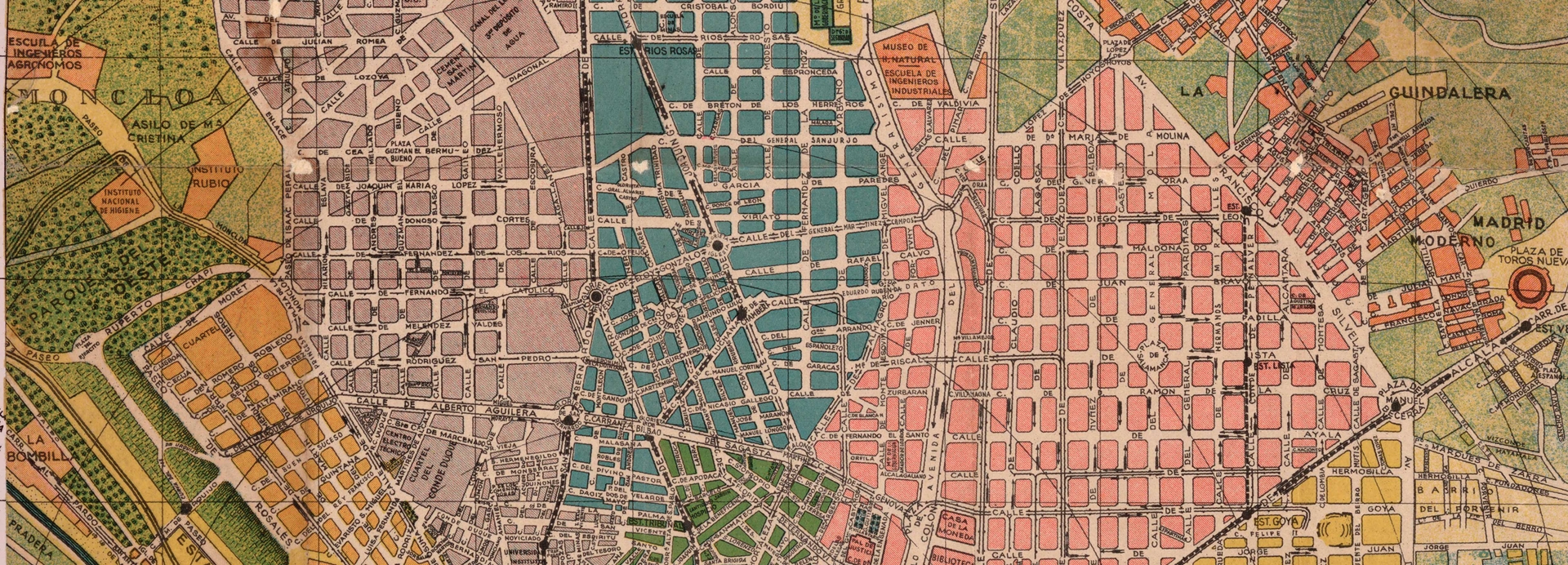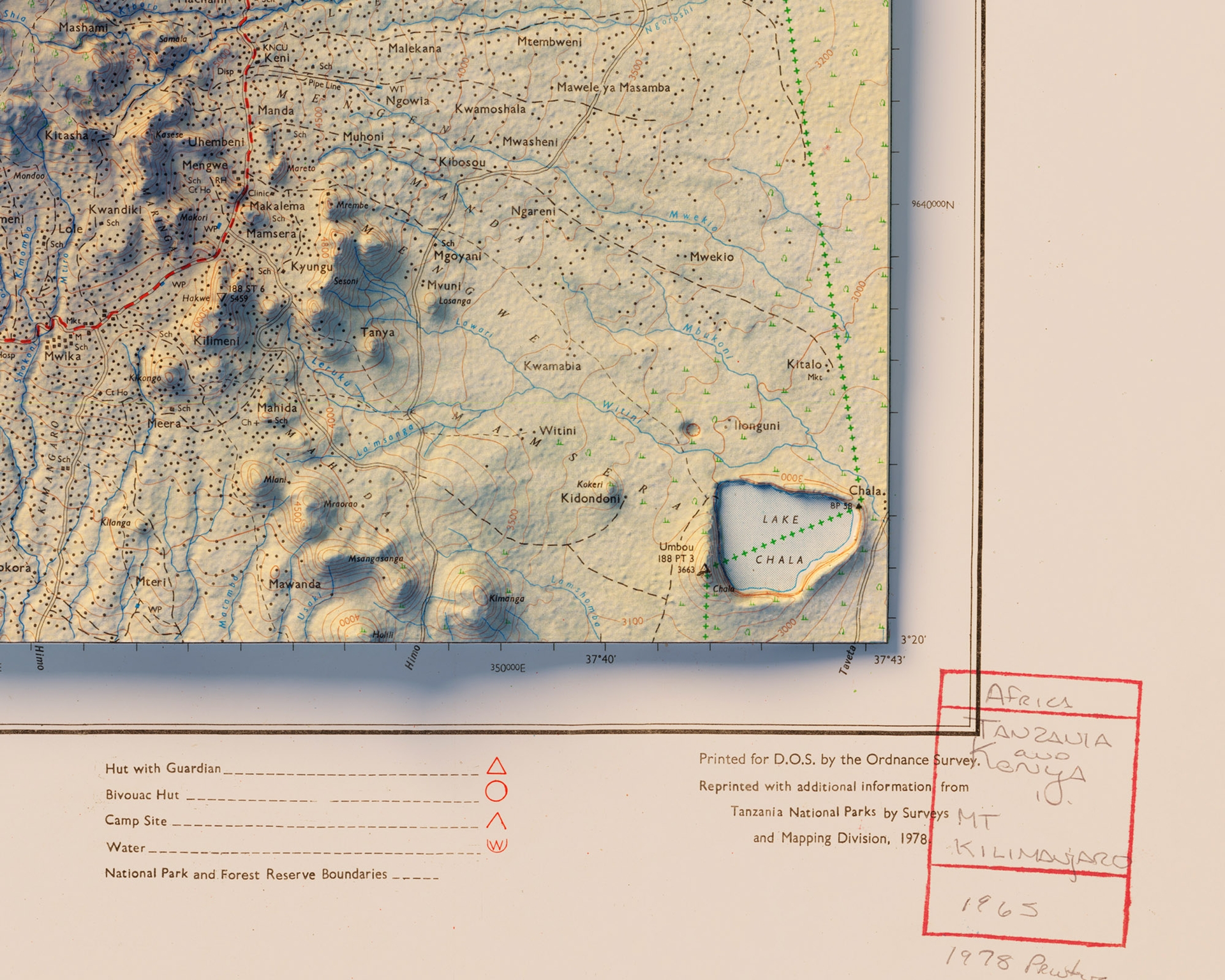City map
This realization gives a new look to topographical maps of cities, showing with a three-dimensional effect buildings, trees and any other object on the surface. They can have a two-fold function: to emphasize the differences from the past or to show the current city in its complexity. In the first case, the transformation that the city has undergone is highlighted by comparing the current urban situation derived from the digital elevation model and a previous one taken from a historical topographic map. The combination of the two shows the evolution of the urban environment, roads network and the expansion of the city over the years. In the second case through the use of a modern urban plan, the aim is to enhance and emphasize the characteristics of the city, without looking for differences, since the digital elevation model and the map are contemporary.
Geological map
The purpose of a geologic map is to represent the distribution of different rock types in a given geographic area. The bedrock formations, due to the density given by the elevation model and the colors of the geological map, bring a new and unique look to the final image. Geological maps look like impressionist paintings, where rock types on the Earth's surface are depicted in different colours, creating a multitude of colour patches that characterise the geographical area of interest. The application of a digital elevation model emphasises the innate three-dimensional nature of the terrain sections' of a geological map, making them lose their initial, practical and aseptic function, as technical maps and become pieces of art.
Hypsometric map
Hypsometric maps represent terrain elevation through the use of colors. A different color is assigned based on the elevation defined by the digital elevation model. Hypsometric maps have two major advantages over all other maps: the colours and the geographical area are free from any constraints. This freedom is due to the absence of a base map, in fact all the information provided is derived from the digital elevation model and the colour palettes assigned to the altitudes.
Soil map
This type of map shows the variety of soils and their properties. The presence of color in the original map, along with the digital elevation model, give corporeality and tangibility to the map, making it look more real. As in the case of geological maps, soil maps look like impressionist paintings, where each region represented is depicted as a collection of colour's patches. Maps lose their initial function to become pieces of art, without the technical aspect.
Topographic map
Topographic maps depict the main features of a territory, both natural and human-made. By adding a digital elevation model to a topographic map, mountains, plains, riverbeds and forests appear three-dimensional, highlighting features of the surface that would not otherwise be appreciated by a traditional map. The maps in this case do not totally lose their technical nature, it is mitigated by the effect of relief but at the same time enriched, making elevation differences tangible, and the presence of mountains more noticeable, usually marked by a change in colour tone.
